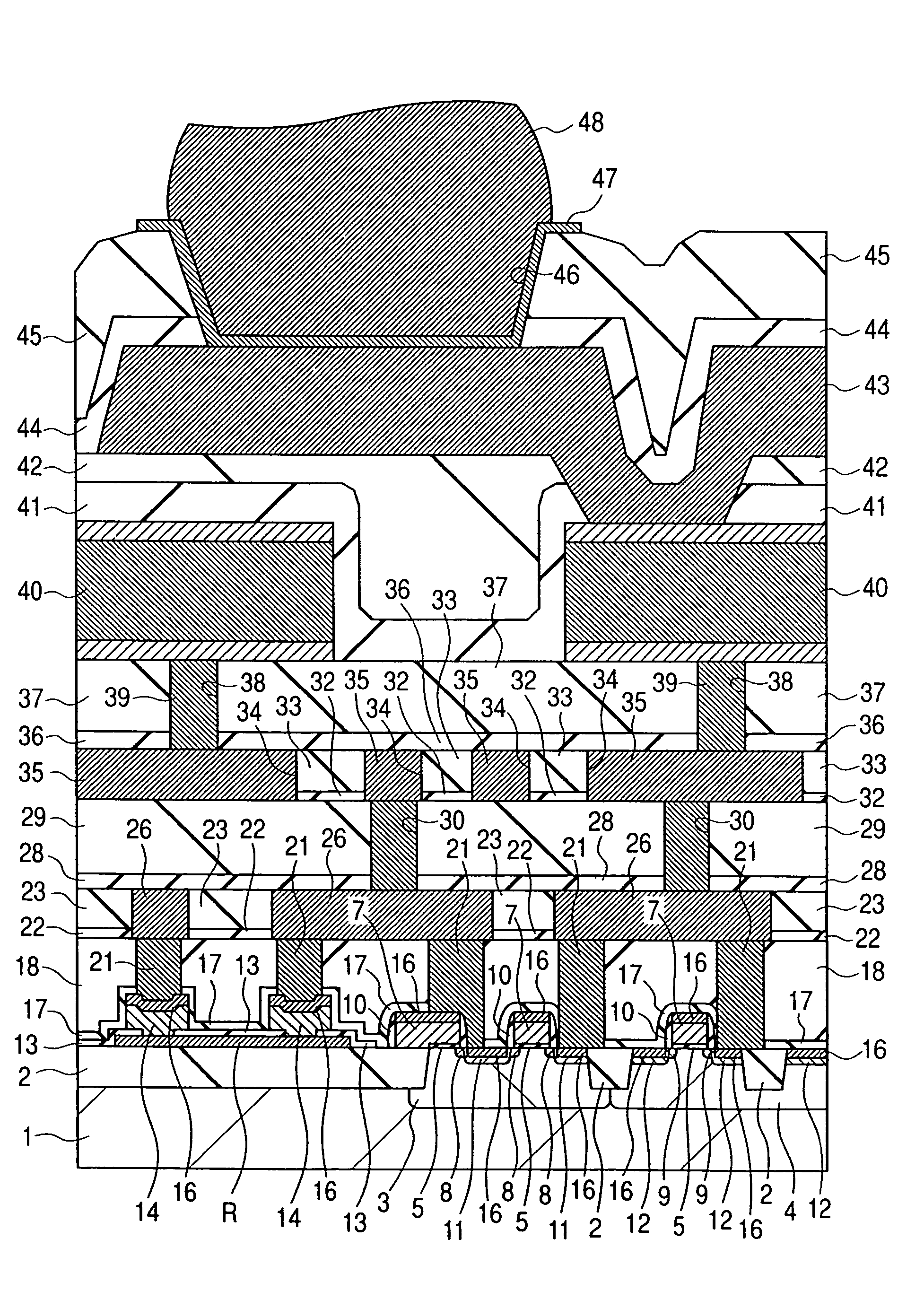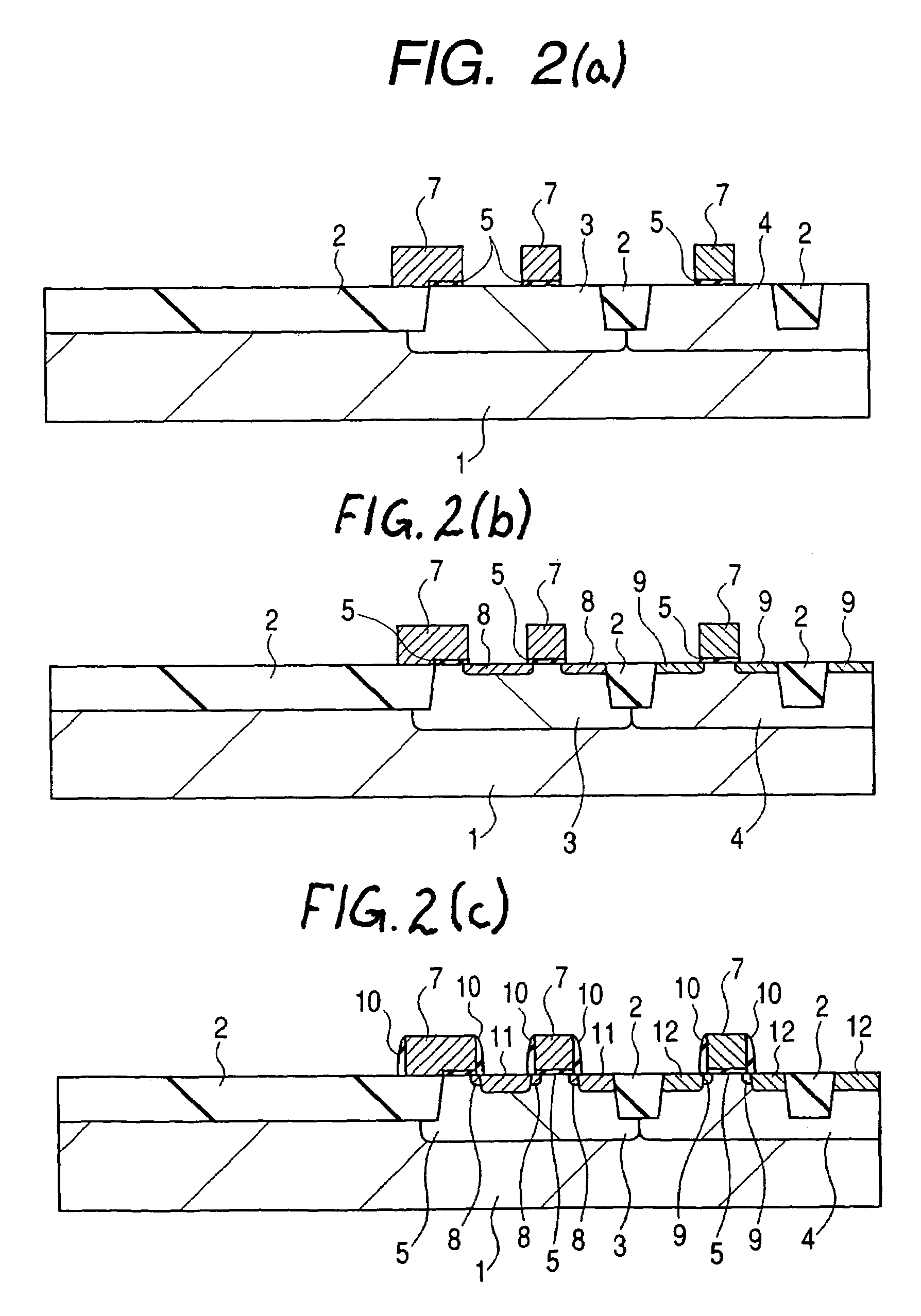Semiconductor integrated circuit device and process for manufacturing the same
a technology of integrated circuit and semiconductor, which is applied in the direction of semiconductor devices, diodes, electrical equipment, etc., can solve the problems of inability to achieve accurate processing of connecting holes without using self-alignement techniques, inability to avoid electrode patterns and connecting hole patterns, and inability to inhibit excessive etching of substrates, etc., to achieve less fluctuations in the resistance of polycrystalline films, less fluctuations in the threshold voltage of misfet, and high reliability
- Summary
- Abstract
- Description
- Claims
- Application Information
AI Technical Summary
Benefits of technology
Problems solved by technology
Method used
Image
Examples
embodiment 1
[0170]FIGS. 1(a) to 14 are cross-sectional views illustrating, in the order of steps, a process in the manufacture of a semiconductor device according to Embodiment 1 of the present invention.
[0171]As illustrated in FIG. 1(a), over the main surface of a semiconductor substrate 1, for example, made of p− type single crystal silicon, an element isolation region 2 is formed. This element isolation region 2 can be formed, for example, in the following manner. First, a silicon oxide (SiO) film and a silicon nitride (SiN) film are successively formed over the main surface of the semiconductor substrate 1. Using a patterned photoresist film, the silicon nitride film is etched. With this etched silicon nitride film being used as a mask, a shallow trench is formed in the semiconductor substrate 1. An insulating film, for example, a silicon oxide film is deposited to embed the shallow trench, followed by removal of the silicon oxide film from a region other than the shallow trench by CMP (che...
embodiment 2
[0239]The process of manufacture of a DRAM (Dynamic Random Access Memory) according to Embodiment 2 of the invention will next be described in the order of steps based on FIGS. 20 to 42. In each of the drawings illustrating the cross-section of a substrate, a region (memory cell array) wherein a memory cell of a DRAM is to be formed is illustrated on the left side, while a peripheral circuit region is illustrated on the right side.
[0240]As illustrated in FIG. 20, an element isolating trench 102 of about 350 nm depth is defined by photolithography and etching in a semiconductor substrate 101 (hereinafter simply called a“substrate”) which is formed of a p-type single crystal silicon having a specific resistance of about 10 Ωcm. A thin (about 10 nm thick) silicon oxide film 106 is then formed on the inner wall of the element isolating trench 102, for example, by wet oxidation at about 850° C. to 900° C. or dry thermal oxidation at about 1000° C. A silicon oxide film (which will hereina...
PUM
| Property | Measurement | Unit |
|---|---|---|
| temperatures | aaaaa | aaaaa |
| temperature | aaaaa | aaaaa |
| temperature | aaaaa | aaaaa |
Abstract
Description
Claims
Application Information
 Login to View More
Login to View More - R&D
- Intellectual Property
- Life Sciences
- Materials
- Tech Scout
- Unparalleled Data Quality
- Higher Quality Content
- 60% Fewer Hallucinations
Browse by: Latest US Patents, China's latest patents, Technical Efficacy Thesaurus, Application Domain, Technology Topic, Popular Technical Reports.
© 2025 PatSnap. All rights reserved.Legal|Privacy policy|Modern Slavery Act Transparency Statement|Sitemap|About US| Contact US: help@patsnap.com



